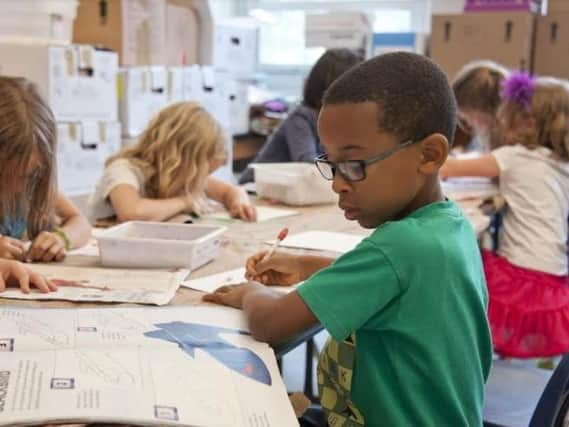Parents urged to get children's eyes checked as Myopia rates triple during pandemic


Myopia, also known as short-sightedness, is thought to affect one in three people in the UK and usually occurs when the eyes grow slightly too long meaning that light doesn't focus on the light-sensitive tissue (retina) at the back of the eye properly.
To dispel the myths, and to ensure that children return to school with their eyes in optimum health, Specsavers is sharing the simple ways to help ease eye strain amongst youngsters.
Advertisement
Hide AdAdvertisement
Hide AdSpecsavers clinical services director, Giles Edmonds, said: "It is important that children spend as much time as possible outdoors to try to reduce the onset of myopia.
"Often children do not take adequate breaks from their screens, which can cause eye strain and potentially damage their eye health, so they may notice a difference in their vision when they go back to school after the summer break."
During the past year and throughout the many lockdowns, children have been spending as much as six hours a day on smartphones and other digital devices.
Children spending too much time in front of screens is a concern for most parents (87%) yet they are unsure how often their child should be taking a break from their devices - more than a quarter (28%) mistakenly think it should be every hour, rather than following the 20:20:20 rule.
Advertisement
Hide AdAdvertisement
Hide AdMr Edmonds said: "Eyes can often become strained when focusing on screens for a long period which, while not usually serious, can be particularly uncomfortable.
"Similarly, if children’s eyes are fixated on a single object for a long period of time, especially small digital screens, this can also cause eye strain.
"Symptoms to look out for include eye discomfort, headaches, sore or tired eyes, difficulty focusing, dry eyes, blurred or double vision, and increased sensitivity to light."
Follow the 20:20:20 rule
Mr Edmonds advises students to follow the 20:20:20 rule, encouraging children to look away from their screen or white board every 20 minutes at something 20 feet away for at least 20 seconds, as this helps to relax the eye muscles.
Outdoor time
Advertisement
Hide AdAdvertisement
Hide AdChildren are also encouraged to make the most of their outdoor and playground breaks.
"There is growing evidence that aerobic exercise is vital for children’s eye health as it increases essential oxygen supplies to the optic nerve and lowers pressure in the eyes", Mr Edmonds said.
"The outdoors also provides many things for us to look at, changing our focal distance rather than being fixated on a single object for a prolonged period of time. In fact, studies have shown that if children just spend an extra hour outdoors a week, then their risk of developing myopia (shortsightedness) drops by 14%."
Keep their eye tests up to date
"While we recommend that adults have an eye test at least every two years, children should visit every year.’ said Mr Edmonds.
Advertisement
Hide AdAdvertisement
Hide Ad"With about 80% of what is taught in school presented visually, being able to see clearly is incredibly important to a child’s overall development. We would recommend making sure children have their annual eye test before starting the new year in September."
To find out more or book an appointment visit www.specsavers.co.uk